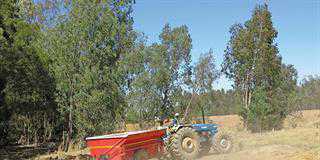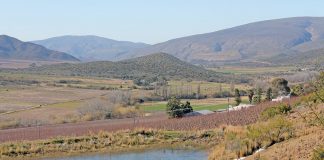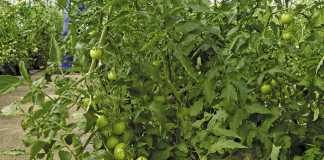It’s time to reconsider what breeding and animal improvement mean in South Africa today, says Kevin Watermeyer, president of the Nguni Cattle Breeders’ Society of South Africa. Kevin runs registered veld-reared Nguni cattle on Zuurplaats, his farm in the Sneeuberg Mountains near Nieu Bethesda in the Karoo.
He’s responding to a call from animal improvement registrar Joël Mamabolo for comments from the South African stud industry on the best way forward for breed improvement, promotion and preservation in South Africa. The aim is to review the current legislation, as set out in the Animal Improvement Act No. 62 of 1998.
“We believe there’s so much scope for the continued growth of purebred Nguni herds in all parts of our country,” says Kevin. “We’ve made a submission to the animal improvement registrar, emphasising the relationship between animal improvement and sustainability.” “We’re confident the registrar will consider all these factors in the interests of a more inclusive, revised Act that will give indigenous breeds, such as the Nguni and others, their rightful place in the South African beef industry.”
Grain-fed vs veld-reared
Kevin says the Nguni Cattle Breeders’ Society of South Africa will recommend that animal improvement should encompass the total population management of cattle in South Africa, and continue questioning the perception that “bigger is better” for all breeds. “Do we want artificially-fed animals covered in rosettes catering for a few breeders, or adaptable, purebred herds that efficiently and sustainably use the total spectrum of ecological conditions throughout South Africa?” he asks.
“Bigger isn’t always better. We must reappraise deeply ingrained perceptions about breeding and animal improvement. For too long, these have been considered as absolute, and for too long, the notion of animal improvement has been overridingly focused on genetics.” Genetics are important, he adds, but they’re only one component of a system that encompasses everything from environmental management to marketing.
“Figures can easily be made to show an animal has amazing production simply by manipulating its nutrition,” he points out. “If you feed an animal from the age of 10 months, it’ll grow faster and larger than one grazing on veld. In fact, it’ll look like a totally different animal, but the sustainability of feeding it grain, particularly in the light of its high carbon footprint, must be re-examined in this era of climate change.”
Livestock production, he says, must be about good veld management and learning from the sustainable relationship between veld and wild animals that’s existed for thousands of years. “Given the indigenous nature of the Nguni, it’s ideal for extensive veld-rearing systems,” he contends.
Veld-breed wisdom
Kevin admits his view isn’t new. There are solid examples from South African livestock management that point to the folly of manipulating stud animals within tight-knit, exclusive circles. “The Merino stud industry, of which my family was part, was huge from the 1930s to the 1980s until people realised that, while economically benefiting a handful of people, it did little to improve and expand the breed. In response to this we saw veld-ram projects from the early 1980s onwards.”
This also showed Nguni breeders the wisdom of Nguni veld-bull projects. “The bulls are reared entirely on the veld and, while they may be smaller than fed bulls of the same age, we believe they help extend the network of viable, registered herds and quality beef production across South Africa,” says Kevin.
He prefers the term “registered” to “stud”. For Kevin, “registered” departs from the inappropriate exclusionism associated with a stud. “Registered”, unlike “stud”, isn’t equated with manipulated animals, an approach outdated today in terms of general production efficiency, and is the reason why smaller indigenous breeds are disappearing across the world at an alarming rate.
The value of indigenous cattle
Kevin feels the Animal Improvement Act is long overdue for a review that also recognises the value of indigenous cattle, of which the Nguni is a prime example. “This breed is part of the social, economic and cultural heritage of our country and we must create a specific position for indigenous breeds in the Act,” he says.
“The Act currently refers to ‘land-race breeds’, which includes indigenous and locally developed breeds, such as the Dorper, Boer Goat and Bonsmara. But ‘indigenous breeds’ must be distinguished from these and awarded their own status.“We nearly lost the Nguni as a breed when European-bred bulls were forced on traditional Nguni breeders as the only way to ‘improve’ their cattle. But a handful of farsighted people, such as Prof HH Curzon in the 1930s, concentrated on breeding purebred Ngunis in opposition to this trend.”
Growth and improvement
To recognise, conserve and improve the Nguni breed, the Nguni Cattle Breeders’ Society of South Africa was established in 1986. “We currently have 441 registered members – the highest membership of all registered beef-cattle breeding societies in South Africa,” says Kevin. He has served on its council for four years, two as its president.
“We also have 58 000 registered animals, making us the second largest society in terms of registered animal numbers. We classify all the different types of Nguni cattle – including Zulu, Swazi, Pedi, Shangaan, Makatini, Tswana – into ecotypes because the environmental conditions they evolved under play a critical role in the size, but not necessarily the animal’s quality. “A Pedi cow might weigh 480kg because the veld’s nutritional value is better than that in the Makatini region, where you might get a 300kg cow.”
The society has grown enormously over the past five years. “Extremely encouraging is the growth in the purebred, and the non-registered or commercial sector,” notes Kevin. “Although not mandated to deal with the commercial sector, we recognise the entire population of Ngunis as being important to the growth of the breed, and all Nguni breeders are welcome to join our society.“Also interesting is the growth of the Nguni in a region such as the Karoo, which is traditionally known as ‘sheep country’.
This is another perception that must be challenged – there’s historical evidence of the presence of indigenous cattle in the Aberdeen area south of Graaff-Reinet, where records from the late 1600s refer to a Khoisan stockman with 20 000 indigenous cattle.Today, the prices of registered Nguni cattle are far more realistic than several years ago when, as those of the Boran now, they were at a premium.
“It’s a reflection of supply and demand,” explains Kevin. “There are far more registered Nguni breeders today, hence the price of stock levels out. “But because of the growth in the number of commercial Nguni farmers farming with purebred animals, the demand for registered stock places a great responsibility on breeders to be stricter in their selection, thus improving the overall quality of the national herd.”
Call Kevin Watermeyer on 072 867 0838, or e-mail [email protected], or contact Joël Mamabolo, registrar of animal improvement, on 082 557 9747, or e- mail [email protected].













